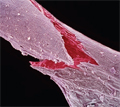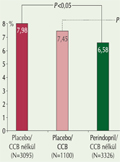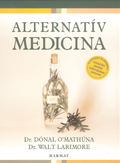The eLitMed.hu medical portal uses computer cookies for convenient operation. Detailed information can be found in the Cookie-policy.
Lege Artis Medicinae - 2010;20(01)
Content
[Special problems of hypertension in women]
[Menopause and pregnancy are especially vulnerable periods of women’s life regarding hypertension. The “Guidelines for the Management of Arterial Hypertension”, issued by the European Society of Hypertension and the European Society of Cardiology, dedicates a separate chapter to hypertension in women. The renewed guidelines of the Hungarian Society of Hypertension also pays a special attention to hypertension detected during pregnancy. In this article, the euthors review the topics of hypertension detected during menopause and pregnancy, discussing pathomechanism and therapy.]
[The changing concept of the metabolic syndrome in the past two decades]
[The introduction of the concept of the metabolic syndrome (MS) (1988) had a great significance from both a theoretical and a clinical point of view. The concept and the assesment of this syndrome has been widely criticized during the past two decades, however, many new components and even new diseases have been added to its defintion. These significant changes motivated us to complete and modify our previous review on this topic published in this journal more than ten years ago. In addition to the classical concept of MS, we discuss its various definitions, in which no consensus has been reached. Besides the two characteristic features, insulin resistance and hyperinsulinism, we discuss the etiological role of endothelial dysfunction, overactivity of the symphato-adrenal system, endocrine activity of the adipose tissue, and low-degree inflammation. We also discuss the roles of the Peroxisome- Proliferator Activated Receptor system and the ubiquitin proteasome system in certain metabolic and inflammatory processes. Recently, the causal unity of the syndrome has been questioned, which has generated an extended and still ongoing debate. For the clinicians, however, the most important fact is that individuals with the characteristic symptoms of the syndrome represent a significant number of the population and are at hight risk of severe cardiovascular conditions. Finally, we outline the newly discovered relationships of the syndrome with other diseases that have a great public health importance, such as cancers, Alzheimer disease, sleep apnoe, nonalcoholic fatty liver disease and chronic obstructive pulmonary disease. We also discuss the supposed common pathomechanisms of these conditions. These associations further increase the significance of MS in terms of both therapy and prevention.]
[The effect of chronic stress on defense mechanisms chronic inflammation and carcinogenesis]
[During stress, the activation of the hypothalamus- pituitary-adrenal axis and the sympathetic, sensory nervous system leads to an increased production of glucocorticoids, catecholamines and other active peptides. The specific receptors on immunocompetent and tissue cells for glucocorticoid, corticotropin-releasing hormone and histamine, substance-P, norepinephrine, calcitonin gene-related peptide can modify the cytokine production of macrophages, lymphocytes and tissue cells. Local hormonal effects have a role in the degranulation of mast cells and thus in histamine release and neurogenic inflammation. Long-term, chronic inflammations promote carcinogenesis, in which the tumourassociated macrophages have an important role. Carcinogenesis is associated with disturbed cooperation between the neuronal immune and endocrine systems.]
1.
Clinical Neuroscience
Is there any difference in mortality rates of atrial fibrillation detected before or after ischemic stroke?2.
Clinical Neuroscience
Factors influencing the level of stigma in Parkinson’s disease in western Turkey3.
Clinical Neuroscience
Neuropathic pain and mood disorders in earthquake survivors with peripheral nerve injuries4.
Journal of Nursing Theory and Practice
[Correlations of Sarcopenia, Frailty, Falls and Social Isolation – A Literature Review in the Light of Swedish Statistics]5.
Clinical Neuroscience
[Comparison of pain intensity measurements among patients with low-back pain]1.
Clinical Neuroscience Proceedings
[A Magyar Stroke Társaság XVIII. Kongresszusa és a Magyar Neuroszonológiai Társaság XV. Konferenciája. Absztraktfüzet]2.
3.
Journal of Nursing Theory and Practice
[A selection of the entries submitted to the literary contest "Honorable mission: the joys and challenges of our profession" ]4.
Journal of Nursing Theory and Practice
[End of Life and Palliative Care of Newborns in the Nursing Context]5.
Journal of Nursing Theory and Practice
[Aspects of Occupational Health Nursing for Incurable Patients ]





















